Starting or migrating an online store in 2025? Good call. Small businesses now have more platform choices than ever. But “more choices” means more decisions: which platform will scale, protect margins, simplify marketing, and (crucially) let you sell without becoming the company’s full-time developer?
This guide sorts the noise. Below you’ll find the 10 best ecommerce platforms for small businesses in 2025, each with a crisp overview, strengths, drawbacks, pricing notes, and ideal users. Use this as a decision checklist (not just a feature list), pick the platform that matches your skills, budget, product type, and growth plans.
1. Shopify

Why choose Shopify? If you want to launch quickly, sell across channels (web, social, marketplaces), and scale without hiring a full infrastructure team, Shopify remains the default choice for many small businesses in 2025. It’s a hosted platform, so it handles security, hosting, and performance for you, and its app ecosystem covers marketing, shipping, accounting, and more.
Strengths:
- Extremely easy to set up and manage
- Huge app marketplace and partner ecosystem
- Reliable hosting, performance, and PCI compliance
- Built-in omnichannel selling (social, marketplaces, POS)
- Good scaling path from single seller to enterprise plans
Drawbacks:
- Monthly fees plus app/add-on costs can add up
- Transaction fees unless you use Shopify Payments
- Less code-level control than open-source solutions
Best for small businesses that want fast time-to-market, minimal technical overhead, and reliable scaling.
2. WooCommerce
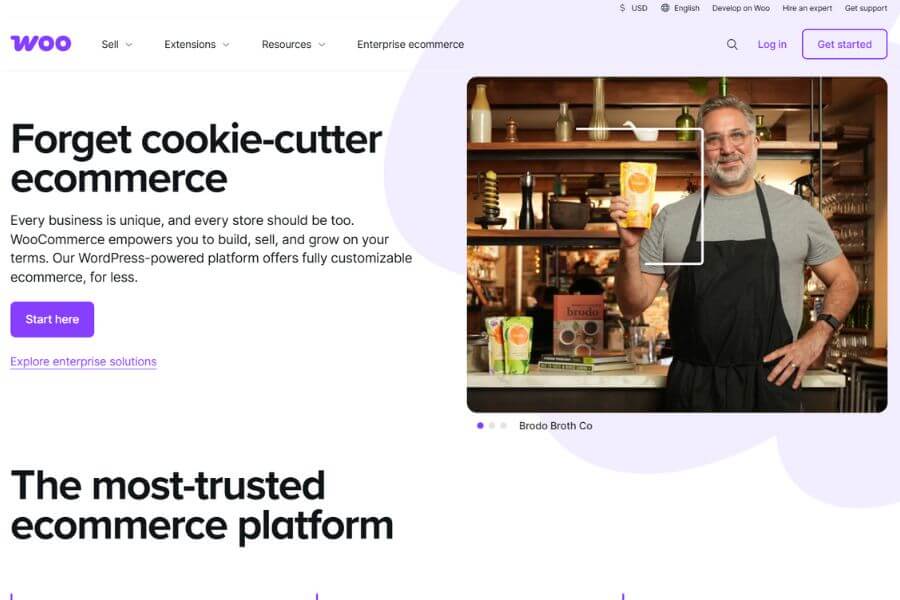
Why choose WooCommerce? WooCommerce is a WordPress plugin that transforms a WP site into a full ecommerce store. That means unmatched flexibility, SEO control, and the ability to use the massive WordPress plugin ecosystem. If you’re comfortable with hosting choices and occasional maintenance, WooCommerce often wins on price and customizability.
Strengths:
- Full control over code and extensibility
- Excellent for content-driven stores (blogs, editorial commerce)
- Wide range of payment gateways via plugins
- Potentially lower ongoing platform fees (depends on host and plugins)
Drawbacks:
- Requires hosting, security management, backups, and occasional troubleshooting
- Plugin compatibility issues can appear if several plugins are used
- Not as plug-and-play for complete beginners
Best for WordPress users who want absolute control and better SEO/ content integration.
3. BigCommerce
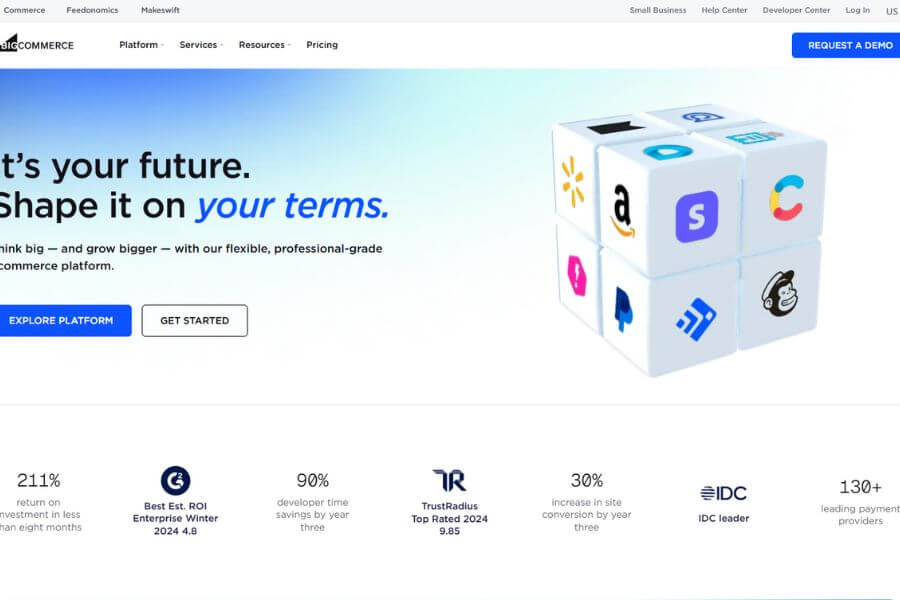
Why choose BigCommerce? BigCommerce positions itself between Shopify (SaaS simplicity) and WooCommerce (customization). It offers a strong set of built-in features: multi-currency, B2B tools, advanced product types, and it supports headless commerce setups for developers. If you want advanced features without piling on extensions, BigCommerce is a solid bet.
Strengths:
- Lots of features available out of the box
- Strong performance and SEO controls
- Good for larger catalogs and multi-channel sales
- Flexible APIs for headless setups
Drawbacks:
- Pricing can escalate with annual sales thresholds
- Learning curve for some advanced features
Best for small businesses that expect significant catalog complexity or fast growth and want built-in tools.
4. Wix

Why choose Wix? Wix has aggressively expanded its commerce tools and added AI-assisted design, making it easier for nontechnical founders to launch attractive stores. Its drag-and-drop editor and template library are especially handy for visual brands and portfolios. Wix’s pricing tiers offer bundled features aimed at small merchants.
Strengths:
- Fast, visual site building with many templates
- AI tools speed up design and content creation
- Good ecommerce features for small catalogs
- Simple built-in marketing and SEO tools
Drawbacks:
- Not as scalable for very large catalogs or complex custom workflows
- Porting a Wix store away (migration) can be more difficult than open platforms
Best for creatives, boutiques, and local businesses that want an attractive store without hiring a designer.
5. Squarespace

Why choose Squarespace? Squarespace continues to shine for designers, photographers, studios, and creators who sell a small set of products and want stunning templates plus a content strategy (blogging, newsletters). The commerce features are solid for lean stores, and Squarespace places a premium on cohesive brand design.
Strengths:
- Beautiful, polished templates and editorial features
- Easy content + commerce integration
- Built-in analytics, email campaigns, and marketing tools
Drawbacks:
- Fewer native commerce features than Shopify or BigCommerce
- Transaction fees on lower plans (depending on current policy)
Best for visual brands, artists, and service providers who rely on winning design and storytelling.
6. Square Online
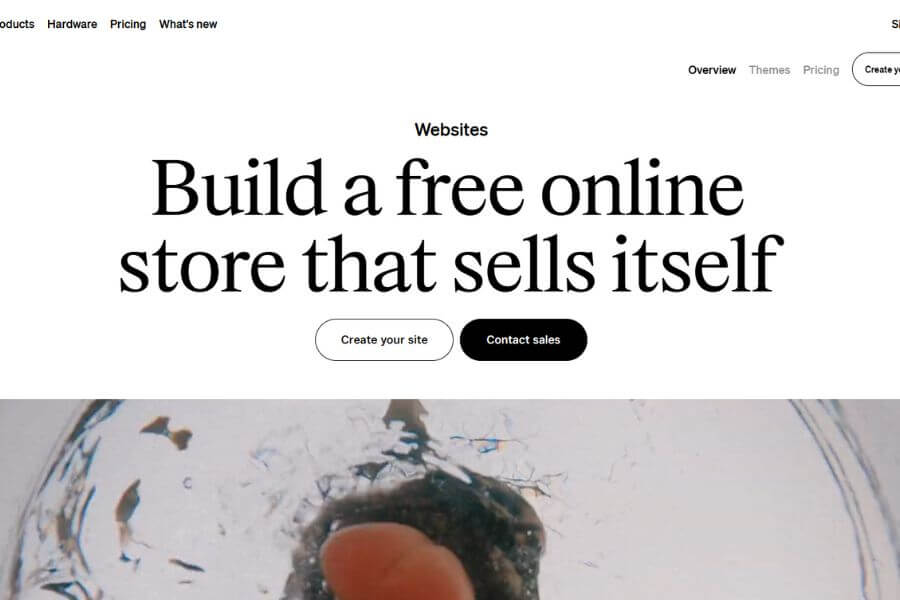
Why choose Square Online? Square’s ecommerce product works exceptionally well for businesses that sell both online and in-person. If you already use Square for payments or POS, Square Online provides a frictionless extension: synced inventory, consistent payments, and unified orders.
Strengths:
- Seamless integration with Square POS and payments
- Simple inventory sync across channels
- Pay-as-you-grow pricing that’s friendly to small sellers
Drawbacks:
- Less flexibility for highly customized storefronts
- Advanced ecommerce features can be limited vs Shopify/BigCommerce
Best for brick-and-mortar shops adding online sales, food trucks, market vendors, and service providers using Square already.
7. Ecwid

Why choose Ecwid? Ecwid (now part of Square’s ecosystem in many markets) is built to be embedded into any website, including WordPress, Tumblr, and existing HTML sites, while also giving you an online storefront. For businesses that already have a website and want to add commerce without a redesign, Ecwid is a low-friction solution.
Strengths:
- Small learning curve; quick embed to existing sites
- Lightweight and low cost for small catalogs
- Sells across social channels and marketplaces
Drawbacks:
- Not as feature-rich for larger stores
- Some UI/UX limitations compared with dedicated platforms
Best for existing site owners who want to add checkout functionality fast and cheaply.
8. Big Cartel

Why choose Big Cartel? Big Cartel is purpose-built for artists, makers, and indie brands that sell limited items. Think Etsy store owners who want a standalone shop. It’s simple, affordable, and tuned to small catalogs.
Strengths:
- Extremely simple setup and pricing
- Great for limited stock and indie branding
- No complex features to manage; it’s intentionally small
Drawbacks:
- Not suitable for stores planning to scale to hundreds of SKUs
- Limited marketing and automation tools
Best for artists, musicians, and indie creators selling a handful of products.
9. Sellfy
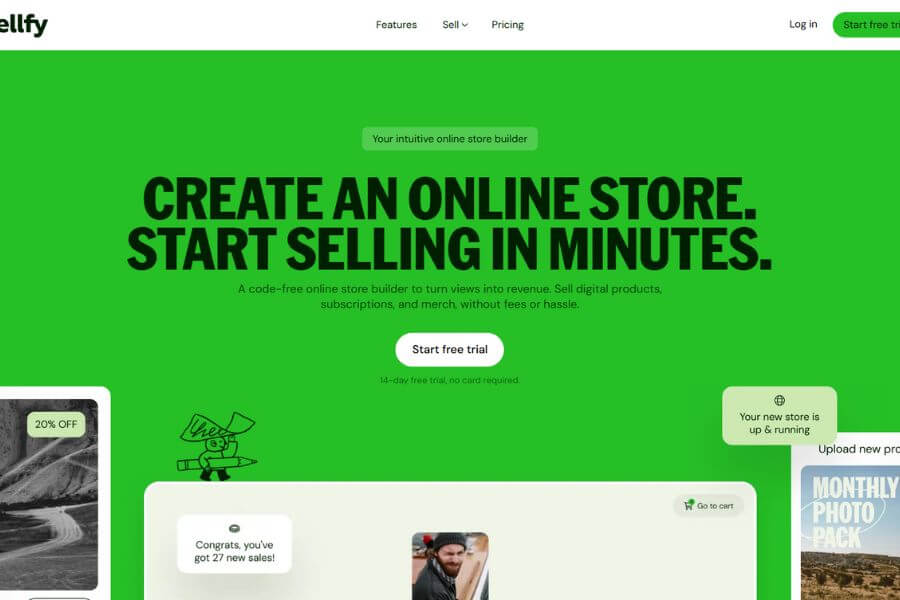
Why choose Sellfy? Sellfy shines for creators who sell digital downloads, subscriptions, and print-on-demand merch. It’s built to sell without complexity: direct product pages, checkout links, and easy embedding in social posts. If your business model is creator-first (digital goods, guides, courses), Sellfy is worth a look.
Strengths:
- Excellent out-of-the-box for digital product delivery
- Simple subscriptions and licensing tools
- Minimal setup; integrates well with creator workflows
Drawbacks:
- Not built for large physical product catalogs or complex shipping needs
- Fewer advanced store customizations
Best for digital creators, course sellers, indie authors, and merch sellers who value simplicity.
10. Adobe Commerce (Magento)
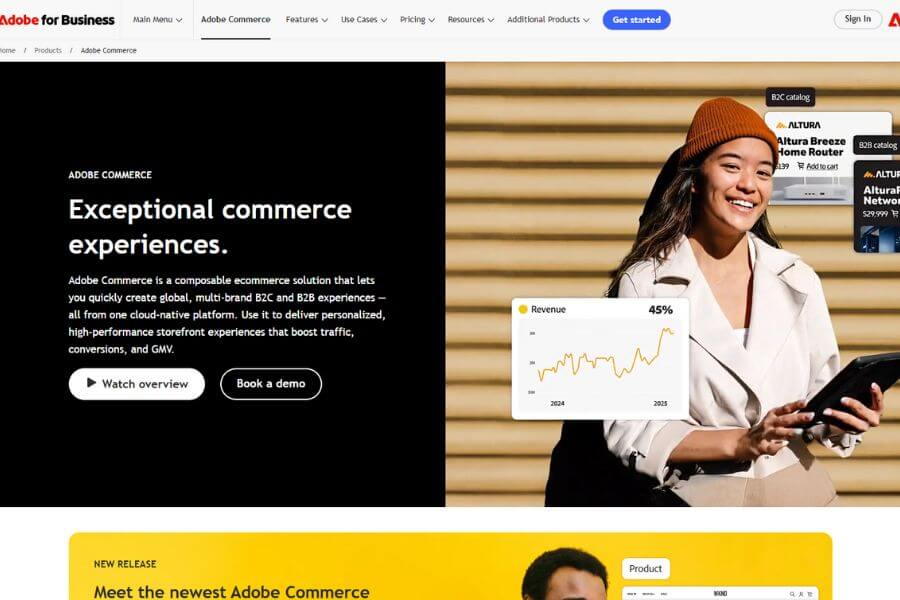
Why choose Adobe Commerce? Formerly Magento, Adobe Commerce remains a powerhouse for stores that need complete customization, very large catalogs, and enterprise-grade features. It’s flexible and scalable, but it’s not plug-and-play. Expect developer time, hosting, and ongoing maintenance.
Strengths:
- Extremely customizable and powerful for unique workflows
- Strong multi-store and B2B capabilities
- Robust APIs for integrations and headless commerce
Drawbacks:
- Higher cost in development and hosting
- Not appropriate if you want zero technical maintenance
Best for businesses with in-house dev resources, complex product rules, or multi-store needs.
Conclusion
The truth is, there’s no single best platform; only the best fit for your business goals.
- Choose Shopify if you want a powerful, scalable, and easy-to-manage solution.
- Go with WooCommerce if you already use WordPress and want total control.
- Try Wix or Squarespace if design and simplicity are your top priorities.
- Opt for Square Online if you sell both in-person and online.
- And if you’re a digital creator, Sellfy or Big Cartel might be your sweet spot.
Remember, your platform should make your business easier, not harder. Focus on functionality, user experience, and growth potential, not just price. In 2025, selling online isn’t optional. But with the right ecommerce platform, small businesses can compete and win on a global stage.





